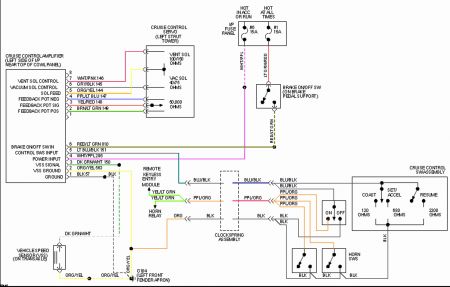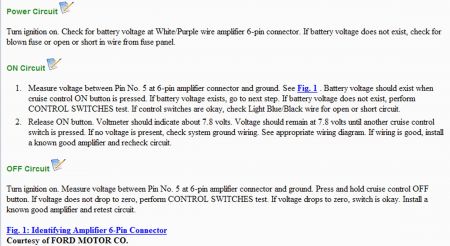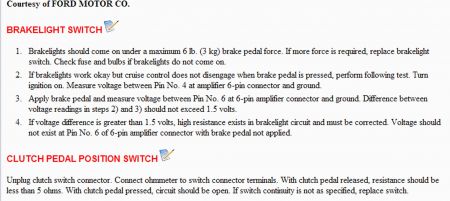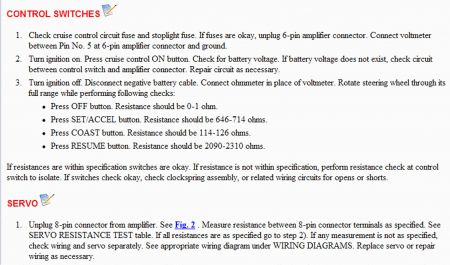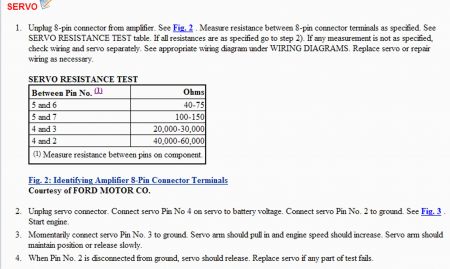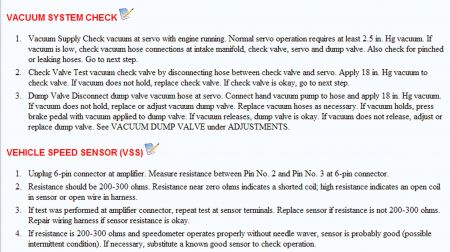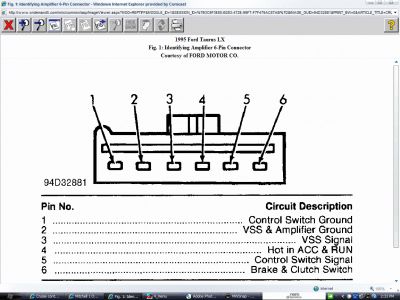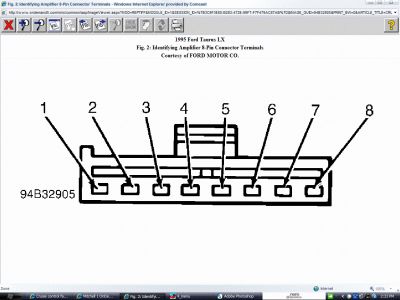Okay, for everyone who's been following this thread:
After eliminating practically everything short of the Vehicle Speed Sensor (VSS, and remember, the speedometer still works just fine!) And the wiring harness, I just put up with the situation for a while and kept randomly trying it to see if the problem would resolve itself. A most troublesome intermittent starter solenoid lead fault that used to be so irksome was like this. If I just held the key, after five or ten seconds it would usually start to crank when this happened. This occurred on and off for a month or two, perhaps every twenty starts or so. And then it just quit happening and hasn't happened even once in at least two years now. The truth: I just REALLY didn't want to start cutting and splicing wiring. My gut feeling was to not touch a thing.
One day recently, I replaced the fuel filter, which I hadn't done in a few years. It's just not a job I care for a whole lot, so I'd let it slide for awhile. Trying to run a diagnostic to see if any codes pertinant to the vehicle speed control (Ford terminology) could be found, I noticed while conducting the so-called 'goose test' that upon taking a brief stab at the accelerator, the engine didn't run so well above about 3000 rpm or so. At 201,000 miles, for all I know, maybe the valve spings are getting weak and the valves are starting to float. Or my fuel pump is developing less than the minimum 30 or so psi specified. Hmmm.I don't have a fuel pressure gauge, but I could pick up a new filter for $8, so why not? It was time, anyway.
Did it run smoother? Yes. And later that day, out on a back road near my home, I cycled the switches just out of habit. The system took hold and performed flawlessly. I've done this about a dozen times since then, and it now works like it always did.
I mentioned this to Jeff, my Ford parts man, who lives just down the street from me as he was getting in his F-150 to head back to the dealership at the end of his lunch hour. I haven't heard screaming hysterical laughter like that in a long, long time.
Never underestimate the power of coincidence. But, there may be a connection. My hypothesis: the engine was starting to starve slightly at highway speed, and the cutting out that resulted kept breaking the vacuum 'signal' the servo relied on in order to function. Or not. Who knows!
So - if your cruise control isn't working, my recommendation after checking for vacuum leaks, the Brake On-Off (BOO) circuit, et al, is to make sure your car is running right. Clean filters, good plugs and plug wires, fresh gasoline of known good quality, etc. Strangely, I didn't notice any hesitation or missing as I drove down the road, but punching it while in park sure was an eye opener. That might just be the test to perform - rev it up and see what happens. If it stumbles when you 'floor it', you may just have found the underlying cause for your cruise failure.
BONUS - I'm swapping out the fuel pump now before the 201,000 mile original fades away and leaves me stranded somewhere. Needless to say, I'll be installing ONLY an original OEM Ford pump, not some aftermarket item! The price for the Motorcraft unit from the dealer is really quite competitive, too. I consulted Jeff to learn what insight his years in the Ford/Motorcraft parts business may have imparted. He tells me:
1) The fuel tank must be removed to replace the pump, not just lowered from the vehicle. If you have ANY issues with the tank, such as rust, big dents, etc, now is a good time to replace it. You're already taking your current one out as it is.
2) Those filler tube rubber hoses that connect the steel tubes to the tank. BE CAREFUL. A new set is $150! Jeff recommends soaking them up with a silicone product like Armor-All, etc. You sure as heck don't want to be cutting them off with a knife like you would a stuck radiator or heater hose!
3) A Left Hand (driver's side) tank strap is $13. A Right hand one for the 95-down Taurus is discontinued and probably very hard to get. If you need either, you might take a look at what the aftermarket has available.
4) If you need to replace one of the two bolts holding the tank straps, they're 10mmx50mm. I'm not 100% sure of the pitch, but it looks like 1.5 would be likely as the threads were somewhat coarse. The bolts aren't too exotic, should you round or twist a head off (still use lots of penetrant - and, maybe it's just me, but torching anything near the fuel tank gives me the heebie-jeebies, so JB-80 and plenty of time are your friends here!) Jeff advises me the 'J-nuts' are obsolete, though. No reason a regular nut and washer wouldn't do the trick today, but if you ever have to go back in, getting a wrench on that nut may be a real bear. If you're long-term with your Taurus like me, try like thunder to save those nuts with LOTS of oil or plan on substituting a 'J' hook with a nut and as many washers as are needed to snug up that tank strap!
Oh, about fuel pumps. There are something like half a dozen different iterations to fit a Taurus. Generally the difference is in the sending unit, which will vary between tank sizes (16 gal. Std. Or optional 18.6 gal) and also between digital and analog fuel gauges, as well. There's also plastic or brass outlet tubes, but I'm not entirely sure what difference that'll make at this time. Jeff felt that if you're going with a relatively low-mile/low-time fuel pump scavenged from another Taurus, you'd be much better making sure the donor car has the same dashboard yours does and then just swapping the entire tank out. This way you don't have to replace the fuel pump gasket, don't have to mess with unlocking the retaining ring holding the pump to the tank, and best of all, you don't have to worry about getting the right pump/sending unit assembly for your particular gas tank.
Hopefully Jeff's advice will be of use to someone reading this!
Take care and good luck,
The TiGor
Monday, November 26th, 2007 AT 7:19 PM
